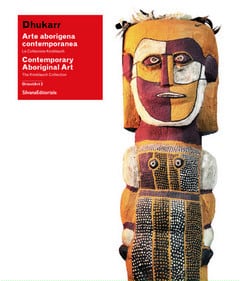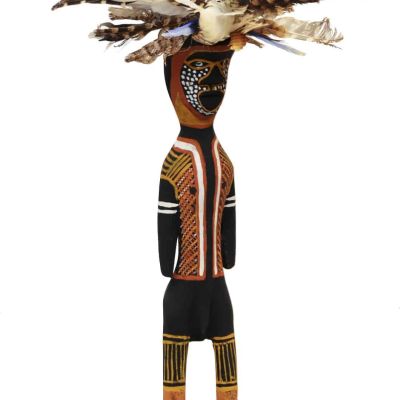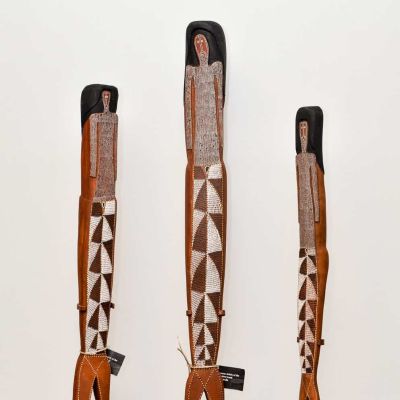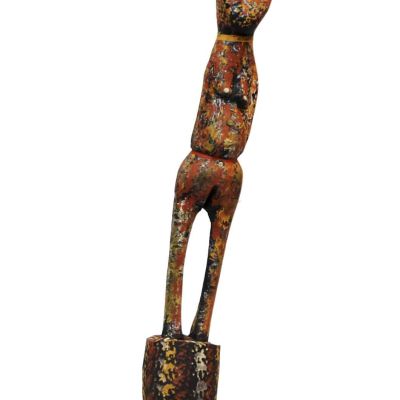HELENEUM LUGANO
Through the works of the Knoblauch Collection, the exhibition takes the visitor on a fascinating journey to discover Australian Aboriginal art of the last thirty years. An art that, although rooted in traditions thousands of years old, expresses an unexpected creativity. The 101 works selected for the exhibition, coming from the main production areas of Australia (Central Australia, Kimberley, Arnhem Land, Tiwi Islands), form a vast assortment of expressive genres, consisting of paintings, sculptures, lithographs, silk-screen prints and etchings: an excursus through the aesthetics and techniques developed by the different artistic movements represented in the exhibition. The temporary exhibition and its catalogue, which documents the entire Knoblauch Collection of 153 works, are the result of many years of research by the Museo delle Culture, in which some of the world’s leading experts on contemporary Aboriginal art have collaborated.

The term Dhukarr, which means “path” in the Yolngu language, is significant for the thematic interpretation of the works in the collection, centred on the idea of an “itinerary” in contemporary Aboriginal art. The 101 works on display, produced mainly in the period between 1980 and today, represent the most recent developments in the Aboriginal art movement, which has flourished in several Australian Indigenous communities since the 1970s. Appropriating Western techniques and materials for the creation of artistic forms rooted in millenary traditions, Australian Aboriginals have fully entered the international contemporary art world, also promoting a greater awareness of the value and vitality of their culture. The exhibition is divided into six sections, one of which is introductory, four dedicated to artistic expression by geographic area (Central Australia, Kimberley, Arnhem Land, Tiwi Islands) and, finally, a thematic section dedicated to dreaming, mythical oral narratives about the journeys and creative feats of ancestral beings.
The OrientArt project intends to present the relationship between contemporary art from Asia and Oceania and the ideological and cultural context in which it operates. The main perspectives of the investigation are dual: the first intends to highlight the ideological interactions of the work of one or more artists with the traditions within which the different languages have developed; the second intends to explore the constitutive elements of the contemporary imaginary and their transfiguration in the grounds of creativity, regardless of the genres of art with which it manifests itself.




